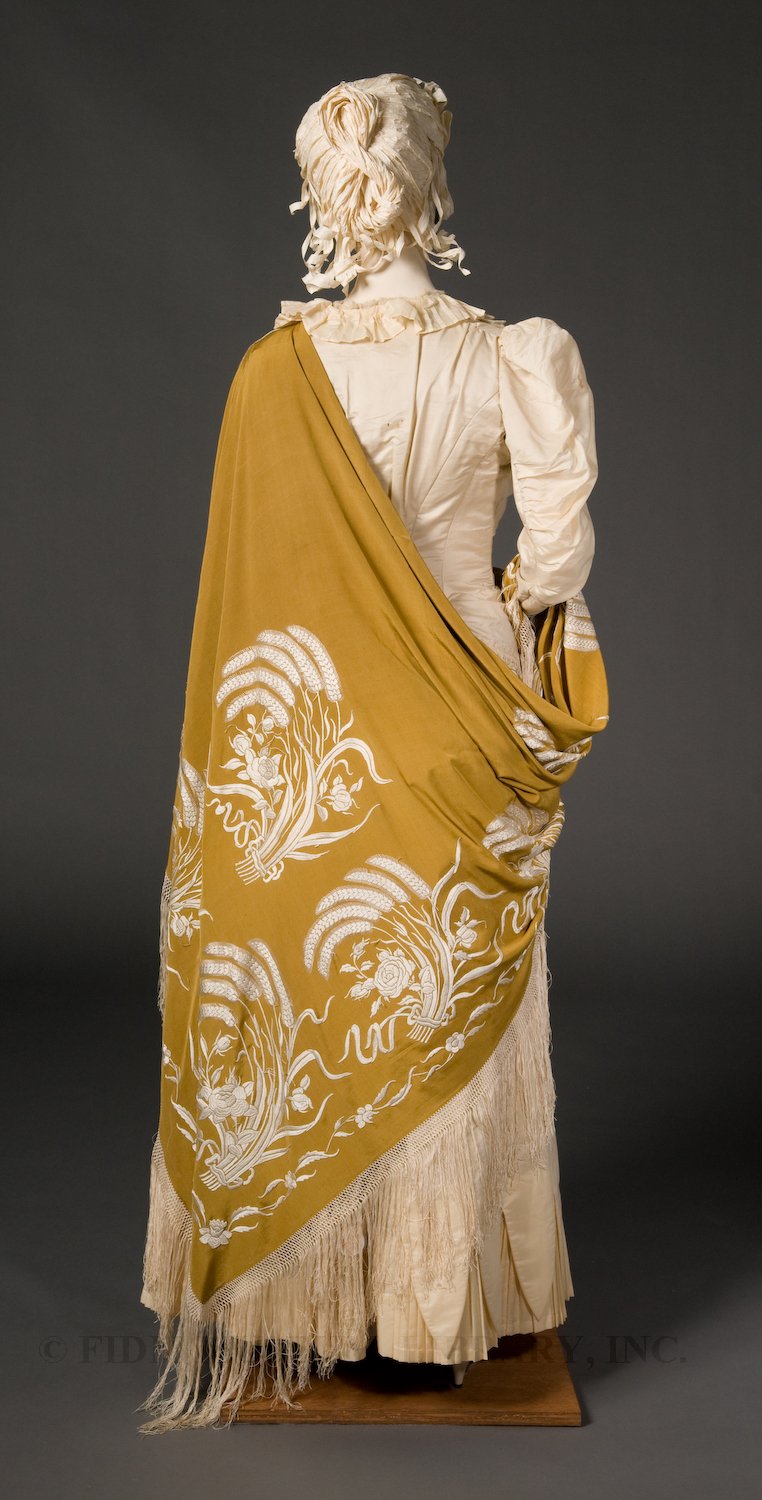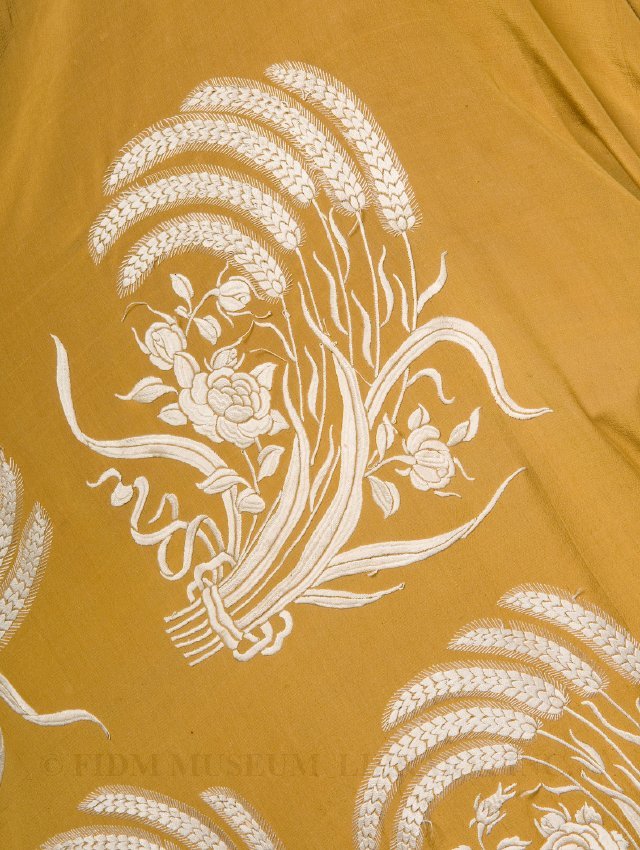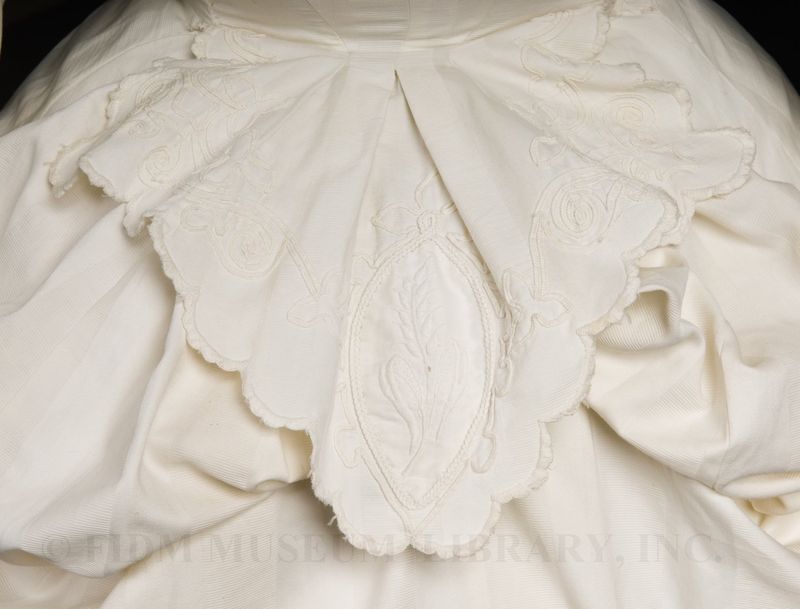Wheat motif
Widespread cultural preoccupations or anxieties are often expressed through dress. This can be extremely overt, as in the case of a T-shirt slogan, or much more discreet, as in a frequently recurring decorative motif. In the 19th century, anxiety relating to the Industrial Revolution and the move from an agrarian to urban/industrial society resulted in the frequent appearance of ripe wheat stalks on dress and accessories.
 Shawl 1875-1885 Gift of E. Heise 97.347.1
Shawl 1875-1885 Gift of E. Heise 97.347.1
Often called the staff of life, wheat is a long-standing symbol of fertility, bounty and resurrection. This symbolic association dates to the earliest days of Western civilization, when the cultivation of wheat and other grains facilitated the eventual development of cities and towns. Women were closely associated with wheat, due to a shared ability to perpetuate society: wheat nourished women, who reproduced and then used wheat (in the form of bread) to feed their families.
 97.347.1 Detail of wheat and rose embroidery
97.347.1 Detail of wheat and rose embroidery
During the Industrial Revolution, urban living became the norm, with many moving from farm to factory in search of better work. This shift resulted in a idealization of country living and all things associated with nature. In a conscious attempt to reject an increasingly mechanized and standardized way of living, many turned to historic or invented styles of dress and traditional design techniques, such as smocking. These considered attempts to shun certain aspects of an industrial lifestyle were accompanied by more subtle resistance, such as the widespread appearance of wheat patterned and embellished textiles.
 Embroidery detail of polonaise bodice (Read more about this bodice here) 1869-74 Gift of Anne Stampfer 94.661.2A-C
Embroidery detail of polonaise bodice (Read more about this bodice here) 1869-74 Gift of Anne Stampfer 94.661.2A-C
Though textile histories document the widespread presence of wheat patterned textiles, the FIDM Museum only has examples of garments embellished with wheat embroidery. Though machine embroidery was widespread, many women embroidered garments or decorative items for the home. Based on embroidery patterns from the 1860s-1880s, wheat stalks appeared not only on clothing, but also on pin-cushions, footstools, slippers and bed coverlets. Wheat or straw was sometimes used as the actual embroidery medium. We have several fascinating objects with straw embroidery, so you can look forward to seeing these on our blog at some point in the future! Unlike more conscious attempts to retain links with rural life, the widespread decorative use of wheat seems to have gone largely unexamined. This suggests that it was an unconscious demonstration of longing or anxiety. What cultural preoccupations are currently being displayed through dress? I've been thinking about some of the longer hemlines seen on the runways recently. Does this reinforce the old saying that hemlines drop in times of economic uncertainty?